Australian Tropical Rainforest Plants - Online edition
Hydriastele wendlandiana (F.Muell.) H.Wendl. & Drude

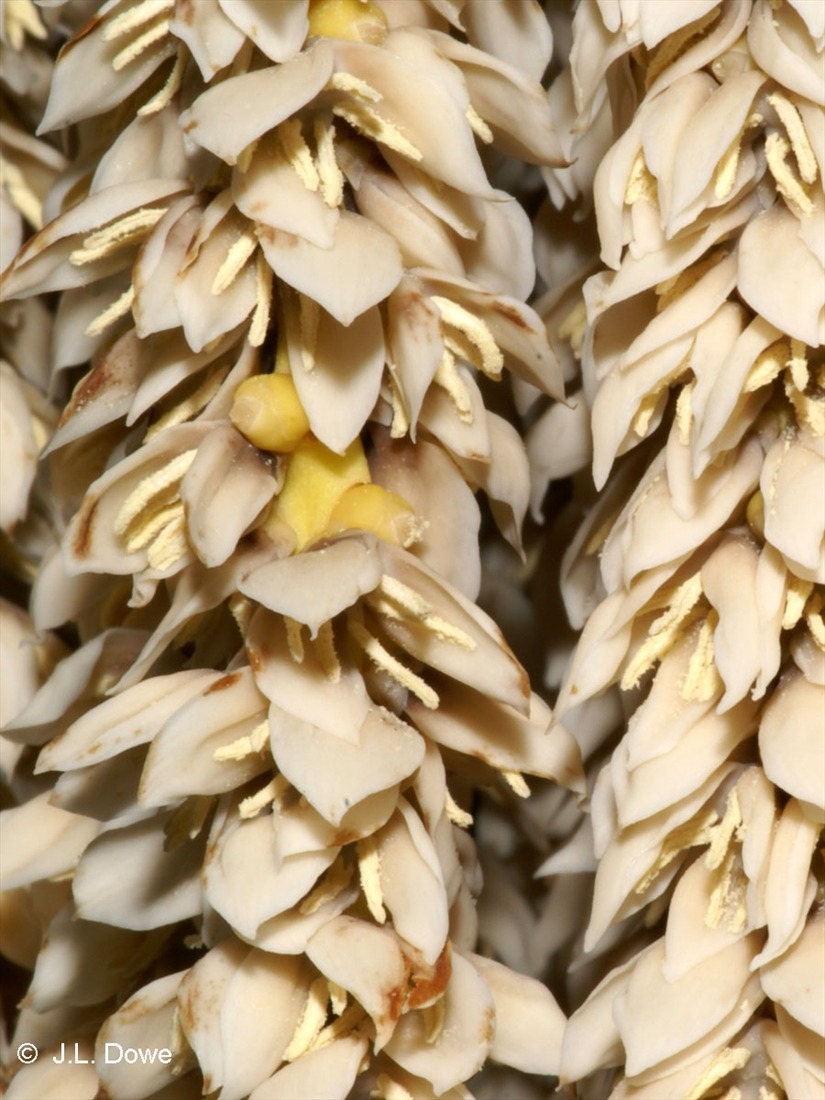
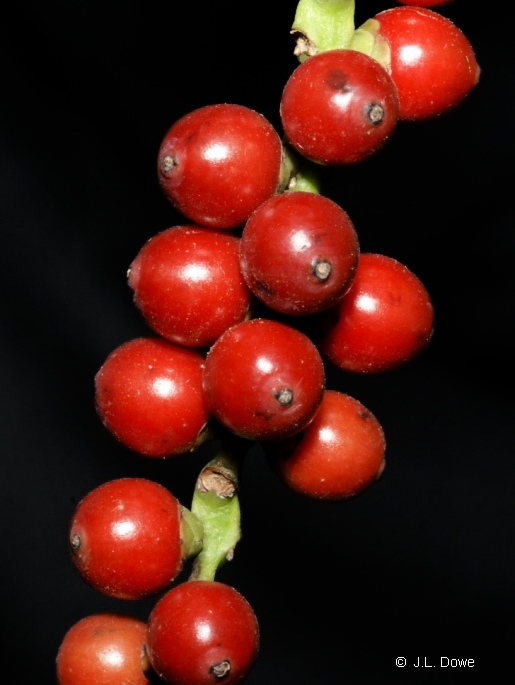
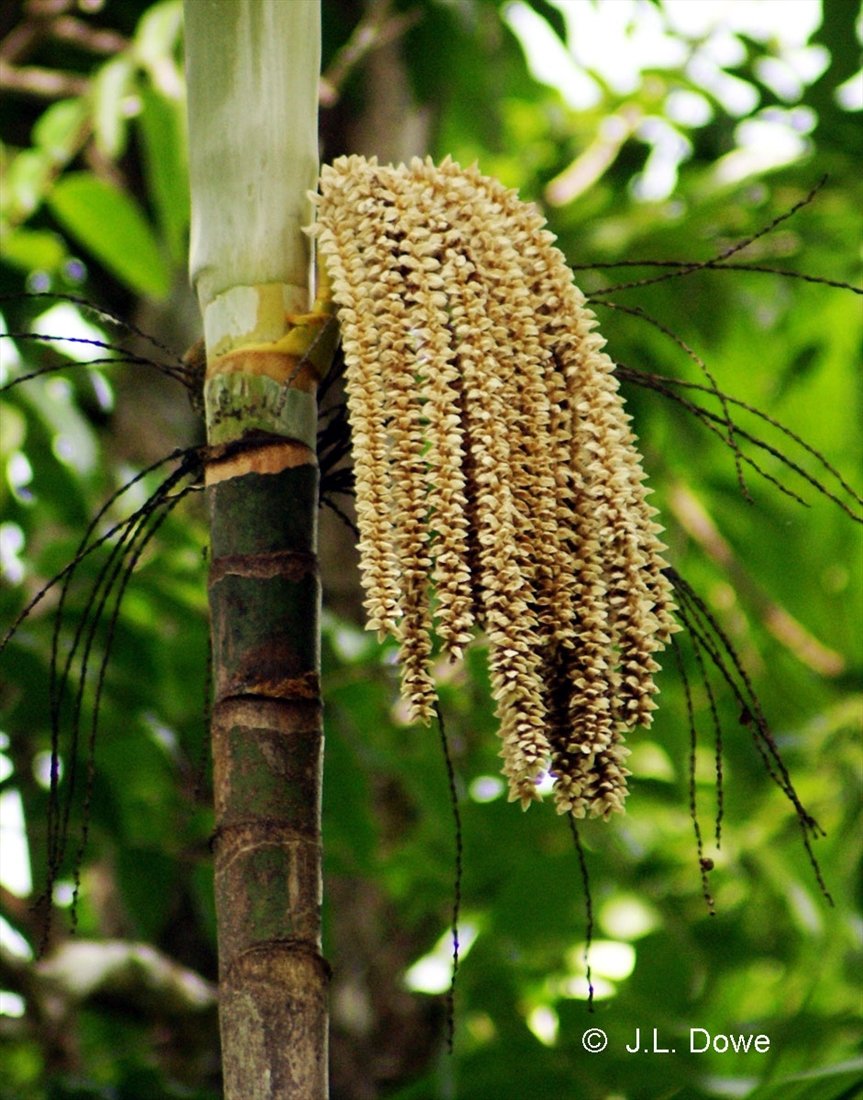


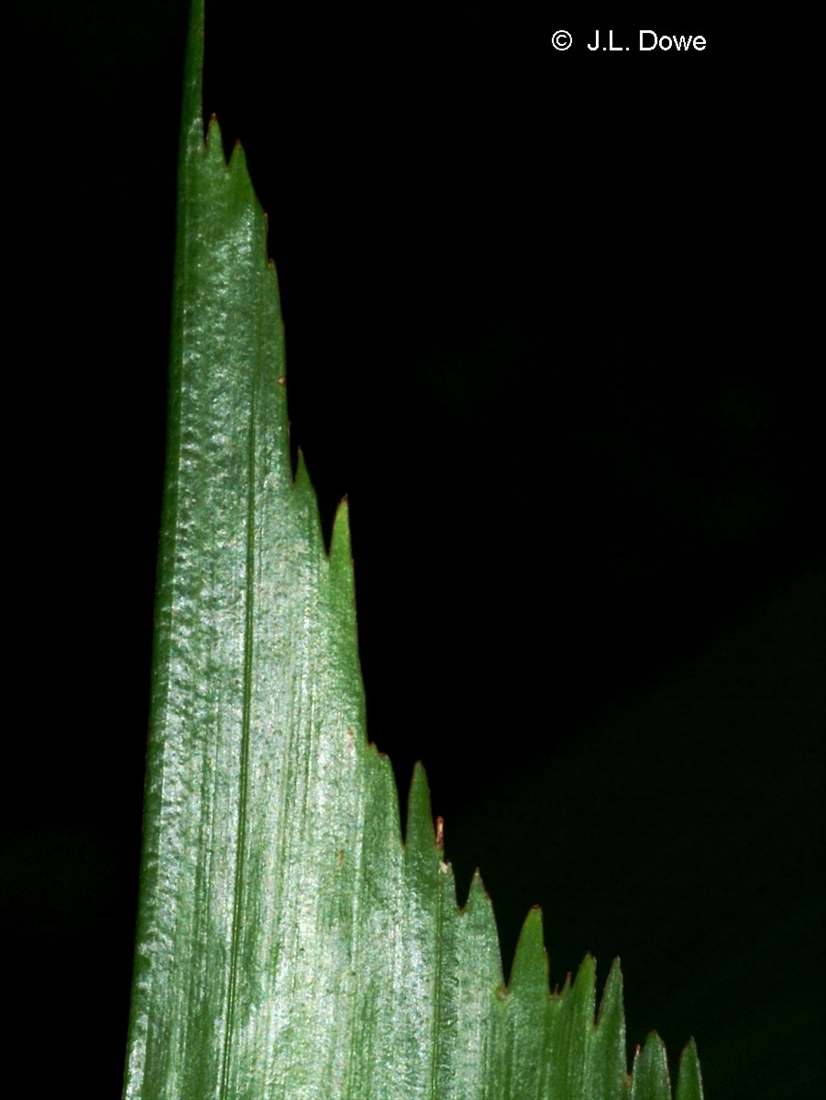


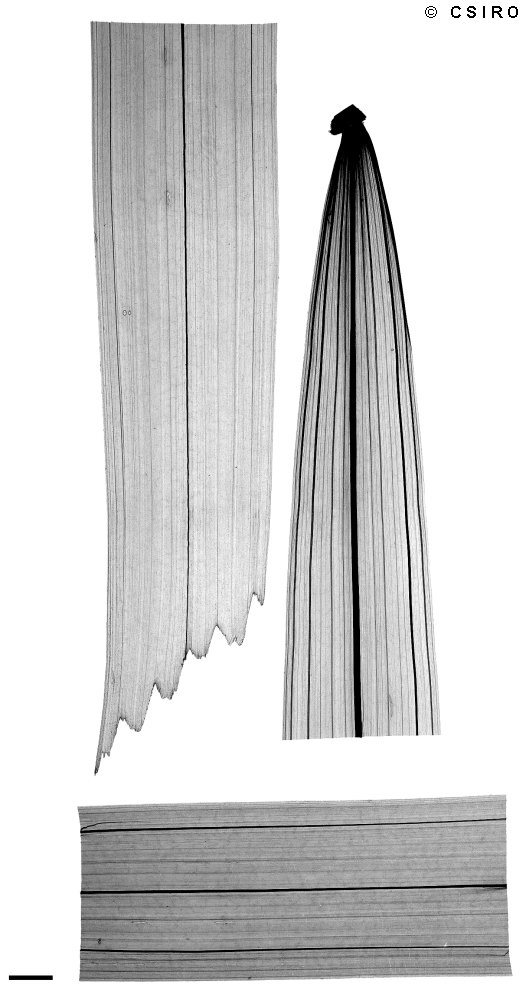
Wendland, H. & Drude, C.G.O. (1875) Linnaea 39: 209.
Palm, Wendland's; Wendland's Palm
Usually grows more than 6 m tall but often flowers and fruits as a shrub 3-6 m tall. Usually multistemmed or with the stems in clusters.
Leaflets up to 40 per compound leaf. Leaflet blades 25-55 x 1.5-6 cm, apex praemorse, sessile on the compound leaf rhachis, ca. folded lengthwise, convex on the upper surface. Compound leaf rhachis ca. triangular in cross section, angular on the upper surface, clothed in white or brown scales. Apical leaflets fused together and thus much broader than most of the lateral leaflets.
Flowers borne in an inflorescence which resembles a cat-o'-nine-tails and emerges from sheaths 20-25 cm long on the stem below the leaves. Each inflorescence consisting of a short peduncle to which are attached 10-20 spikes each ca. 20 cm long. Flowers borne in triads on the spikes with one female flower between two male flowers. Stamens six, three attached to the tepals and three free. In the female flowers all tepals are similar and embrace the ovary so that only the top and the stigma are exposed.
Endemic to Australia, occurs in NT, CYP and NEQ. Altitudinal range from near sea level to 150 m. Grows as an understory plant in lowland rain forest often found in or on the margins of swamps or permanently wet areas.
Sometimes cultivated in tropical lowland gardens.
Distinguished from other species of Hydriastele by the clumping habit, irregularly arranged pinnae, and curved leaves.





